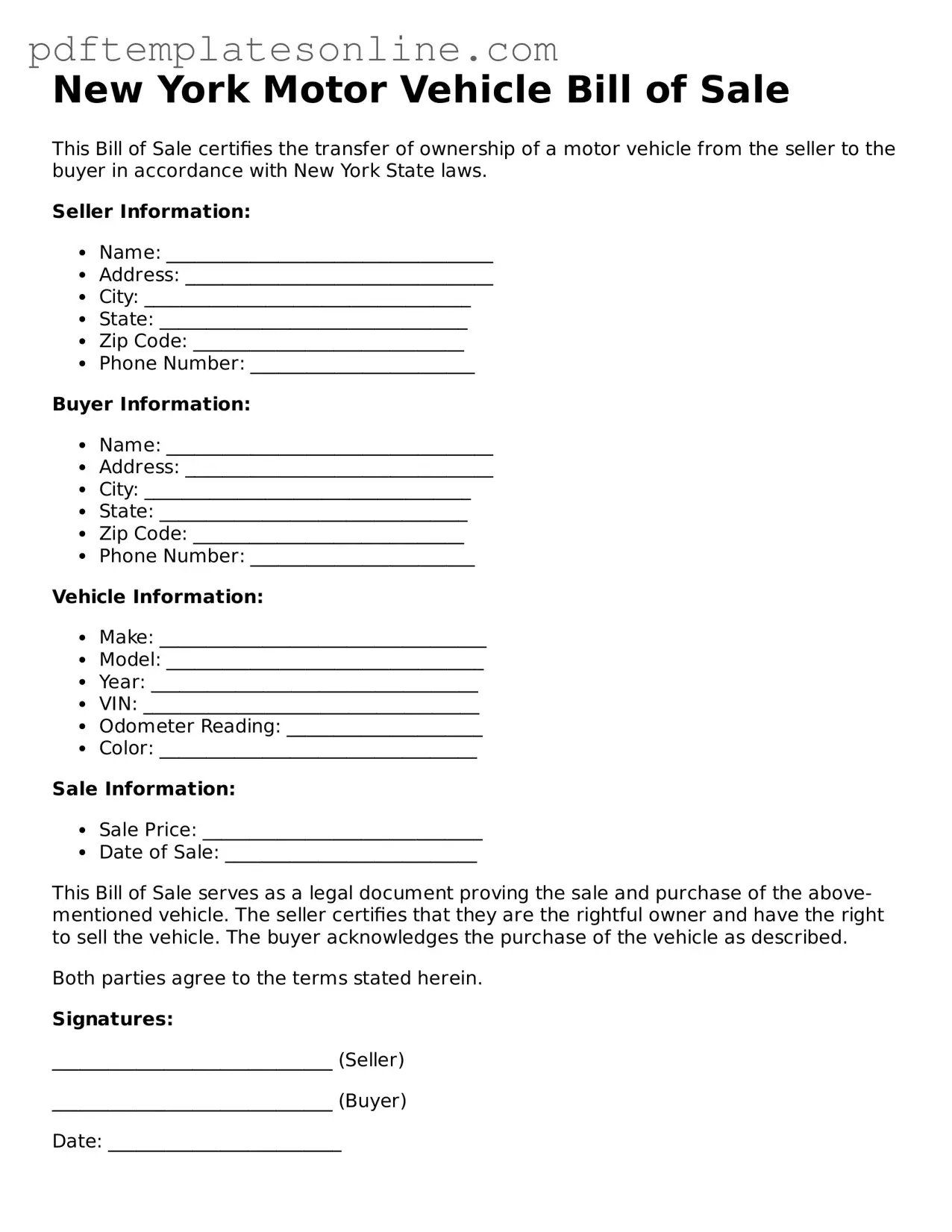Filling out the New York Motor Vehicle Bill of Sale form can seem straightforward, but many people make common mistakes that can lead to complications down the line. Awareness of these pitfalls can save time and ensure a smoother transaction.
One frequent error is neglecting to include all necessary information. Buyers and sellers must provide accurate details about the vehicle, including the Vehicle Identification Number (VIN), make, model, and year. Omitting any of this information can create confusion and may even render the document invalid.
Another common mistake is failing to sign the document. Both the buyer and the seller must sign the Bill of Sale for it to be legally binding. A missing signature can lead to disputes about ownership and complicate the registration process.
People often forget to include the sale price. The Bill of Sale should clearly state the amount for which the vehicle is sold. This figure is crucial not only for the transaction but also for tax purposes. Leaving it blank can lead to issues with the Department of Motor Vehicles (DMV).
Additionally, many individuals do not date the form. A date is essential as it marks the official transfer of ownership. Without a date, it may be difficult to prove when the sale occurred, which can affect liability and registration matters.
Another mistake involves not checking for accuracy. After filling out the form, it’s important to review all entries for typos or errors. Even a small mistake, like a wrong digit in the VIN, can lead to significant problems when registering the vehicle.
Some people overlook the importance of keeping a copy of the Bill of Sale. After the transaction, both parties should retain a copy for their records. This document serves as proof of the sale and can be crucial if any disputes arise in the future.
Lastly, individuals sometimes forget to verify the buyer’s identity. It's essential to ensure that the person you are selling the vehicle to is legitimate. Requesting identification can help prevent potential fraud and ensure a safe transaction.
By being mindful of these common mistakes, both buyers and sellers can navigate the process of completing the New York Motor Vehicle Bill of Sale form with confidence and clarity.
